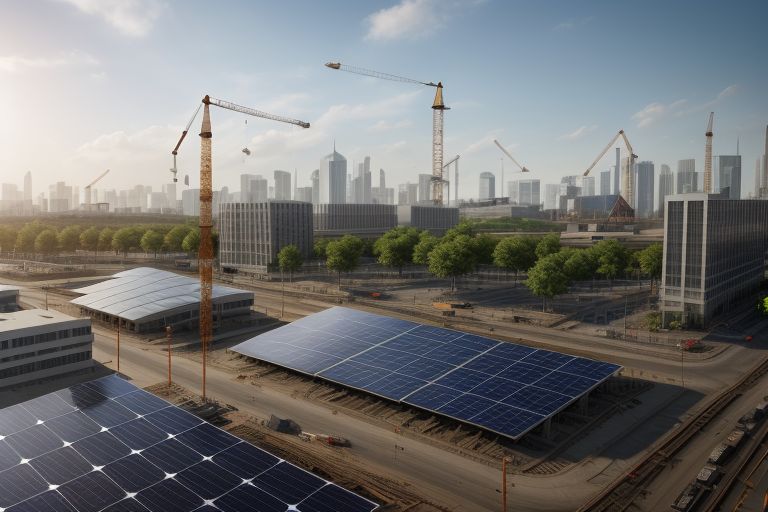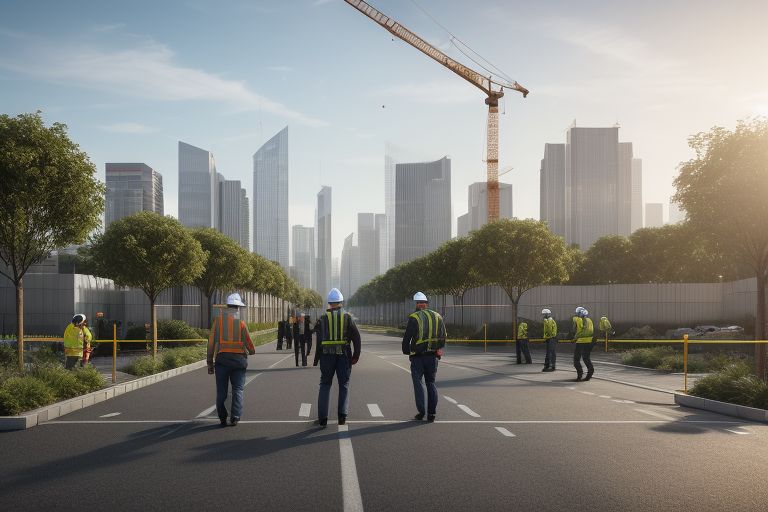- [email protected]
- +254 723 065019
- Mon - Sat 9:00 AM - 5:00 PM
- Login or Register
- Favorites
1.3 Key Terminology in Sustainable Construction
Lesson 1.3: Key Terminology in Sustainable Construction
Welcome to Lesson 1.3: Key Terminology in Sustainable Construction! In this lesson, we will explore the essential vocabulary and concepts that form the backbone of sustainable construction practices. Understanding these key terms is crucial for effectively communicating and implementing sustainable strategies in your projects.
Sustainable construction is a field rich with specialized terminology, each term representing a crucial aspect of design, material selection, and environmental impact. By becoming familiar with these terms, you will be better equipped to navigate discussions, interpret regulations, and apply best practices in your work.
We will cover terms related to resource efficiency, energy management, green building certifications, and more. This foundational knowledge will enhance your ability to engage in meaningful conversations about sustainability and contribute to more informed decision-making in your construction projects.
Get ready to expand your vocabulary and deepen your understanding of the language that drives sustainable construction. Let’s dive in!
Objective:
By the end of this lesson, learners will be familiar with key terms and concepts in sustainable construction, which will enable them to:
- Effectively Communicate: Use precise terminology when discussing sustainable practices with colleagues, clients, and stakeholders. This clarity will facilitate more productive conversations and collaborations.
- Understand Industry Standards: Interpret and apply industry standards, regulations, and guidelines that rely on specific sustainable construction terminology. This understanding will help ensure compliance and enhance project outcomes.
- Implement Best Practices: Incorporate sustainable practices into their projects with a solid grasp of the relevant concepts. This knowledge will support effective decision-making and promote the adoption of environmentally friendly and resource-efficient practices.
- Educate Others: Share and explain sustainable construction concepts with others, contributing to the broader adoption of sustainable practices within the industry.
This lesson will equip you with the essential vocabulary needed to navigate the world of sustainable construction confidently and effectively.
1. Introduction to Key Terminology
In the rapidly evolving field of sustainable construction, mastering the key terminology is essential for anyone involved in the industry. This section aims to provide a foundational understanding of the terms and concepts that are critical for effective communication, accurate implementation, and adherence to industry standards.
Understanding key terminology helps professionals navigate the complexities of sustainable construction by ensuring they can:
- Communicate Clearly: Use precise language to discuss project goals, materials, and practices with various stakeholders, including clients, contractors, and regulatory bodies.
- Adhere to Standards: Comply with industry standards and guidelines that govern sustainable construction practices, ensuring projects meet established criteria and expectations.
- Implement Practices Effectively: Apply the correct methods and technologies based on a thorough understanding of the relevant terms and concepts.
- Educate and Advocate: Share knowledge about sustainable practices and promote broader adoption within the industry and the community.
Key Points:
a. Importance of Understanding Terminology: Understanding and using key terminology in sustainable construction is crucial for several reasons:
-
- Effective Communication: Clear and precise language ensures that all stakeholders, including architects, engineers, builders, and clients, are on the same page. This reduces misunderstandings and aligns project goals with sustainability objectives.
- Compliance with Industry Standards: Many sustainable construction practices are governed by specific standards and regulations. Knowing the correct terms helps ensure that projects meet these requirements and adhere to best practices.
- Accurate Implementation: Familiarity with terminology allows professionals to accurately implement sustainable practices and technologies. This includes selecting the right materials, applying appropriate design principles, and utilizing relevant certifications.
- Educational Value: Understanding key terms enables professionals to educate others about sustainable construction, promoting broader adoption of green building practices and fostering a more informed industry.
b. Scope: The terminology in sustainable construction encompasses several critical areas:
-
- Materials: Terms related to eco-friendly building materials, such as recycled content, renewable resources, and low-impact materials. Understanding these terms helps in selecting and specifying sustainable materials for construction projects.
- Design Principles: Concepts related to energy efficiency, passive solar design, and sustainable site planning. Familiarity with these terms supports the development of designs that reduce environmental impact and improve building performance.
- Certifications: Knowledge of various green building certifications, such as LEED (Leadership in Energy and Environmental Design), BREEAM (Building Research Establishment Environmental Assessment Method), and others. Understanding these certifications is essential for achieving and verifying sustainable building standards.
- Technologies: Terms related to sustainable technologies, including energy-efficient systems, renewable energy sources, and water-saving technologies. This knowledge helps in the implementation and optimization of advanced solutions in construction projects.
Reflection Element:
Think about why it is important to understand specific terms in sustainable construction.
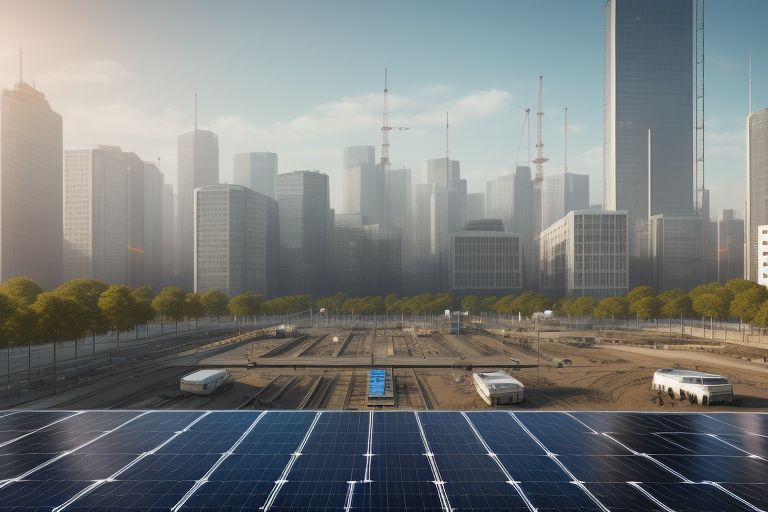
2. Key Terminology and Definitions
In this section, we will delve into the essential terminology and definitions crucial for understanding and working within the field of sustainable construction. Mastery of these terms is not just a matter of vocabulary; it’s about equipping yourself with the language needed to navigate, implement, and communicate sustainable practices effectively.
Key terms:
Below are some essential terms with definitions and brief explanations of their relevance in sustainable construction:
Green Building:
- Definition: A building designed, constructed, and operated to minimize its environmental impact while enhancing the health and comfort of occupants.
- Relevance: Emphasizes energy efficiency, resource conservation, and reducing pollution, creating a more sustainable and livable environment.
Life Cycle Assessment (LCA):
- Definition: A method to evaluate the environmental impacts of a building or material throughout its entire life cycle—from extraction of raw materials to disposal.
- Relevance: Helps in making informed decisions on materials and construction methods to minimize environmental impact, ensuring a comprehensive approach to sustainability.
Carbon Footprint:
- Definition: The total amount of greenhouse gases emitted directly or indirectly by a building, material, or activity.
- Relevance: Understanding and reducing carbon footprints are central to achieving sustainability goals in construction, mitigating climate change impacts.
Energy Efficiency:
- Definition: Using less energy to perform the same function, often through improved design, insulation, and energy-efficient technologies.
- Relevance: Reduces operational costs and environmental impact over the building’s lifespan, contributing to long-term sustainability.
Renewable Energy:
- Definition: Energy derived from sources that are naturally replenished, such as solar, wind, and geothermal.
- Relevance: Integration of renewable energy reduces dependence on fossil fuels, lowers greenhouse gas emissions, and supports a cleaner energy future.
Sustainable Materials:
- Definition: Materials that have a reduced impact on the environment, including recycled, reclaimed, rapidly renewable, or locally sourced materials.
- Relevance: Promotes resource efficiency, reduces waste, and supports the use of eco-friendly materials in construction.
Low-Emitting Materials:
- Definition: Materials that emit low levels of volatile organic compounds (VOCs) or other harmful chemicals.
- Relevance: Improves indoor air quality, contributing to occupant health and comfort, and aligns with green building standards.
Passive Solar Design:
- Definition: Architectural design that takes advantage of natural sunlight, heat, and ventilation without relying on mechanical systems.
- Relevance: Reduces energy consumption and enhances thermal comfort by utilizing natural resources effectively.
Net-Zero Energy Building:
- Definition: A building that generates as much energy as it consumes over a year, typically through a combination of energy efficiency and on-site renewable energy generation.
- Relevance: Represents the future of sustainable building design and operation, aiming for a balanced energy footprint.
Building Information Modeling (BIM):
- Definition: A digital representation of the physical and functional characteristics of a building, used to improve design, construction, and operational efficiency.
- Relevance: Facilitates better planning, reduces waste, and enhances collaboration in sustainable construction, leading to more efficient project execution.
Green Roof:
- Definition: A roof that is partially or completely covered with vegetation, soil, and a waterproofing membrane.
- Relevance: Provides insulation, reduces urban heat island effects, and improves stormwater management, contributing to environmental sustainability.
Greywater Recycling:
- Definition: The process of reusing wastewater from sinks, showers, and laundry for non-potable uses such as irrigation.
- Relevance: Reduces freshwater consumption, enhances water conservation, and promotes sustainable water management practices.
LEED (Leadership in Energy and Environmental Design):
- Definition: A widely used green building certification system that evaluates the sustainability of buildings based on various criteria such as energy efficiency, water conservation, and material use.
- Relevance: Provides a benchmark for sustainable construction practices, helping to standardize and recognize high-performance green buildings.
BREEAM (Building Research Establishment Environmental Assessment Method):
- Definition: One of the world’s leading sustainability assessment methods for master planning projects, infrastructure, and buildings.
- Relevance: Recognizes best practices in environmental performance and sustainable construction, offering a comprehensive framework for assessing and improving building sustainability.
Circular Economy:
- Definition: An economic model that focuses on designing out waste and keeping products and materials in use for as long as possible.
- Relevance: Encourages the reuse, recycling, and repurposing of materials within the construction industry, promoting a more sustainable and efficient approach to resource management.
Energy Star:
- Definition: A program and certification by the U.S. Environmental Protection Agency (EPA) that identifies and promotes energy-efficient products and buildings.
- Relevance: Buildings and products with the Energy Star label meet strict energy efficiency criteria, reducing energy consumption and operational costs.
Sustainable Site Development:
- Definition: The practice of developing land in a way that minimizes environmental impact, preserves natural resources, and enhances ecological value.
- Relevance: Promotes responsible land use, reduces habitat destruction, and incorporates features like native landscaping and erosion control.
Thermal Mass:
- Definition: The ability of a material to absorb and store heat energy, then release it slowly over time.
- Relevance: Buildings with high thermal mass can maintain stable indoor temperatures, reducing heating and cooling demands and enhancing energy efficiency.
LEED Certification Levels:
- Definition: LEED (Leadership in Energy and Environmental Design) certification levels include Certified, Silver, Gold, and Platinum, indicating the degree of sustainability achieved.
- Relevance: Provides a clear benchmark for building sustainability performance and helps stakeholders understand the level of environmental commitment.
Water-Efficient Fixtures:
- Definition: Plumbing fixtures and fittings designed to reduce water consumption, such as low-flow faucets, toilets, and showerheads.
- Relevance: Reduces water usage and utility bills, contributing to overall resource conservation and environmental sustainability.
Green Building Materials:
- Definition: Materials that are environmentally friendly, including those that are recycled, sustainably sourced, or have low environmental impacts during their lifecycle.
- Relevance: Supports the reduction of resource depletion and minimizes negative impacts on the environment.
VOCs (Volatile Organic Compounds):
- Definition: Organic chemicals that evaporate into the air and can contribute to indoor air pollution and health issues.
- Relevance: Low-VOC materials and finishes help improve indoor air quality and occupant health.
Urban Heat Island Effect:
- Definition: The phenomenon where urban areas experience higher temperatures than their rural surroundings due to human activities and built environments.
- Relevance: Mitigating this effect with green roofs, reflective materials, and vegetation can improve local climate conditions and energy efficiency.
Smart Building Technology:
- Definition: Advanced systems and technologies that automate building operations such as lighting, HVAC, and security to optimize performance and energy use.
- Relevance: Enhances operational efficiency, reduces energy consumption, and improves occupant comfort.
Cradle-to-Cradle:
- Definition: A design philosophy that promotes creating products and systems that are regenerative and beneficial to the environment, akin to a closed-loop system.
- Relevance: Supports sustainability by ensuring that materials can be continuously reused or recycled, minimizing waste and resource depletion.
Sustainable Urban Drainage Systems (SUDS):
- Definition: Systems designed to manage and mitigate the impact of urban runoff on water bodies through techniques like permeable surfaces and detention basins.
- Relevance: Reduces the risk of flooding, enhances water quality, and supports effective stormwater management.
Biophilic Design:
- Definition: An approach to building design that integrates natural elements to connect occupants with nature and enhance their well-being.
- Relevance: Improves mental health, increases productivity, and creates more enjoyable and sustainable spaces.
Passive House:
- Definition: A rigorous standard for energy efficiency in buildings that reduces the building’s ecological footprint by minimizing energy use for heating and cooling.
- Relevance: Achieves exceptional energy performance through airtight construction, high insulation, and efficient ventilation systems.
Building Envelope:
- Definition: The physical separator between the interior and exterior environments of a building, including walls, roofs, and windows.
- Relevance: Effective building envelopes enhance energy efficiency, thermal comfort, and overall building performance.
Zero Waste Construction:
- Definition: A construction approach aimed at eliminating waste by reducing, reusing, and recycling materials, and ensuring that all waste generated is diverted from landfills.
- Relevance: Supports resource efficiency and minimizes the environmental impact of construction activities.
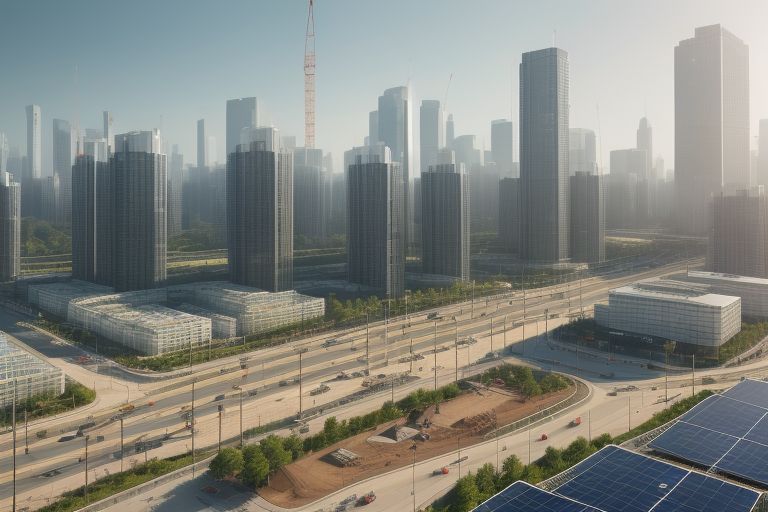
3. Application of Key Terms in Practice
In this section, we will explore how the key terms and concepts you’ve learned about sustainable construction are applied in real-world scenarios. Understanding these terms is just the first step; the real challenge lies in translating this knowledge into practical action. By examining case studies, project examples, and best practices, you’ll see how these terms influence decision-making, design, and implementation in sustainable construction projects.
Through this exploration, you will gain a deeper appreciation for how theoretical concepts are put into practice and how they contribute to more sustainable and effective construction outcomes. Let’s delve into the practical application of these key terms and see how they shape successful sustainable construction projects.
Key Points:
a. Understanding Context: Applying key sustainability terms in real-world projects is crucial for making informed decisions and achieving effective outcomes. Here’s how these terms come into play:
-
- Green Building: In practice, green buildings integrate multiple sustainable practices, from energy-efficient systems to the use of low-emitting materials. Understanding this term helps stakeholders ensure that every aspect of the building’s design and operation aligns with environmental goals.
- Life Cycle Assessment (LCA): By conducting an LCA, architects and builders evaluate the environmental impacts of their choices over the entire lifespan of a building, guiding decisions on materials and design strategies that minimize overall impact.
- Energy Efficiency: In projects, energy efficiency is applied through design features such as high-performance insulation, energy-efficient windows, and LED lighting. Professionals use this term to implement strategies that lower energy consumption and operational costs.
- Renewable Energy: When integrating renewable energy, such as solar panels or wind turbines, understanding this term helps in planning and installing systems that reduce dependence on non-renewable energy sources.
- Sustainable Materials: Using sustainable materials means selecting options that are recycled, reclaimed, or rapidly renewable. This term helps ensure that material choices support environmental and resource conservation goals.
- Net-Zero Energy Building: Achieving net-zero energy involves a combination of energy efficiency measures and renewable energy sources. Understanding this term helps in designing and implementing strategies to balance energy use with generation.
b. Common Misconceptions:
-
- Energy Efficiency vs. Energy Generation:
- Energy Efficiency refers to using less energy to perform the same function, often through improved design and technology. It focuses on reducing energy consumption.
- Energy Generation involves creating energy from renewable sources, such as solar or wind. It focuses on producing energy to offset consumption. Misunderstanding this distinction can lead to confusion about how to achieve overall sustainability goals.
- Sustainable Materials vs. Green Materials:
- Sustainable Materials are those that have a reduced impact on the environment, including being recyclable or rapidly renewable.
- Green Materials generally refer to materials that have been certified to meet certain environmental criteria, such as low emissions or energy efficiency. While overlapping, not all sustainable materials are green-certified, and vice versa.
- Circular Economy vs. Recycling:
- Circular Economy is a broader concept that focuses on designing out waste and keeping products and materials in use for as long as possible.
- Recycling is a process within the circular economy framework that involves reprocessing used materials into new products. Understanding the difference helps in implementing more holistic sustainability practices.
- Energy Efficiency vs. Energy Generation:
By grasping these key points and clarifying misconceptions, professionals can better navigate the complexities of sustainable construction and make more informed, effective decisions in their projects.
Reflection Element:
Think about scenarios or projects in your previous experience in which you can identify the terms that apply.
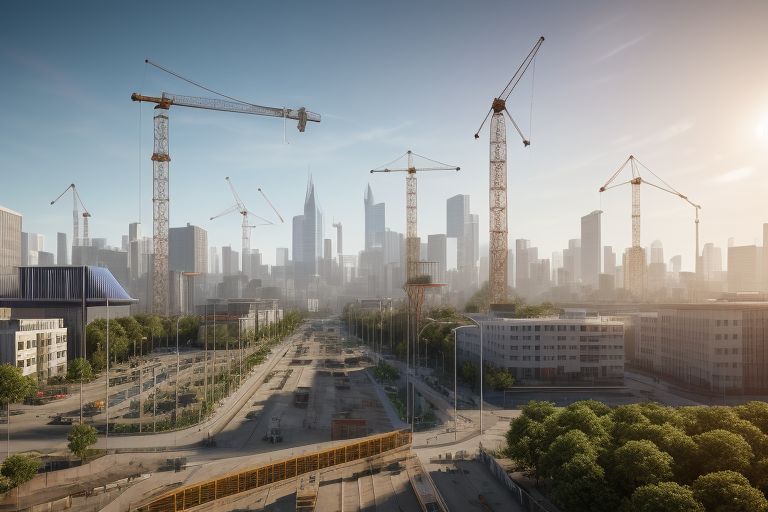
4. Summary and Importance of Terminology
Understanding the terminology in sustainable construction is more than just learning a set of definitions; it’s about grasping the concepts that drive effective and impactful practices in the industry. In this section, we will summarize the key terms covered in this lesson and highlight their importance in the context of sustainable construction.
We have explored essential terms such as “Green Building,” “Life Cycle Assessment (LCA),” and “Energy Efficiency,” each playing a crucial role in shaping sustainable practices. From understanding how renewable energy contributes to reducing carbon footprints to recognizing how sustainable materials support resource conservation, these terms form the foundation for effective communication and implementation of sustainability principles in construction projects.
Mastering these terms enables professionals to:
- Communicate Clearly: Accurate use of terminology ensures that all stakeholders—from designers to clients—are on the same page regarding sustainability goals and practices.
- Implement Best Practices: Knowledge of key concepts helps in applying best practices in design, construction, and operation to achieve sustainable outcomes.
- Meet Standards and Certifications: Understanding terminology is crucial for meeting the criteria of green building certifications and complying with industry standards.
- Drive Innovation: Familiarity with terms and concepts fosters innovation by enabling professionals to explore new technologies and approaches that enhance sustainability.
Key Points:
a. Mastery of Key Terms:
-
- Clear Communication: Understanding and correctly using key terms is essential for effective dialogue among all stakeholders in construction projects. Whether you are discussing design plans, evaluating materials, or assessing building performance, precise terminology ensures that everyone involved has a shared understanding of sustainability goals and practices.
- Successful Implementation: Proper use of terms such as “Net-Zero Energy,” “Sustainable Materials,” and “Green Roof” allows professionals to implement best practices accurately. Mastery of these terms helps in making informed decisions that align with sustainability objectives and standards, contributing to the overall success of sustainable construction projects.
b. Staying Updated with New Terminology:
-
- Evolving Standards: As sustainability practices and technologies advance, new terms and concepts emerge. Staying informed about these changes ensures that professionals remain relevant and capable of implementing the latest innovations in sustainable construction.
- Ongoing Learning: Continual education about evolving terminology allows professionals to adapt to new trends, tools, and methodologies, enhancing their ability to contribute to the field and drive forward more effective sustainability measures.
- Industry Adaptation: The construction industry’s commitment to sustainability is dynamic, with new research and technologies constantly reshaping the landscape. Being updated with current terminology supports adaptability and ensures that practices align with the latest industry standards and regulations.
By mastering key terms and staying current with evolving terminology, construction professionals can ensure clear communication, effective implementation of sustainable practices, and alignment with the most recent advancements in the field.
Reflection Element:
Reflect on which terms were new to you, and how you see them applying to your work.
Congratulations on completing Lesson 1.3: Key Terminology in Sustainable Construction! You’ve now acquired a solid foundation in essential terms and concepts, which will significantly enhance your ability to communicate and apply sustainable practices effectively in your projects.
Before we move forward, take a moment to prepare for the upcoming quiz on Lesson 1. This quiz will help reinforce your understanding of the material covered and ensure you’re ready to tackle more advanced topics.
In our next lesson, Lesson 2: Eco-Friendly Building Materials, we’ll delve into the types of materials that contribute to sustainable construction. You’ll learn about various eco-friendly options, their benefits, and how they can be incorporated into your building projects to further promote environmental stewardship.
Stay tuned as we explore the exciting world of eco-friendly materials and their role in building a more sustainable future.

